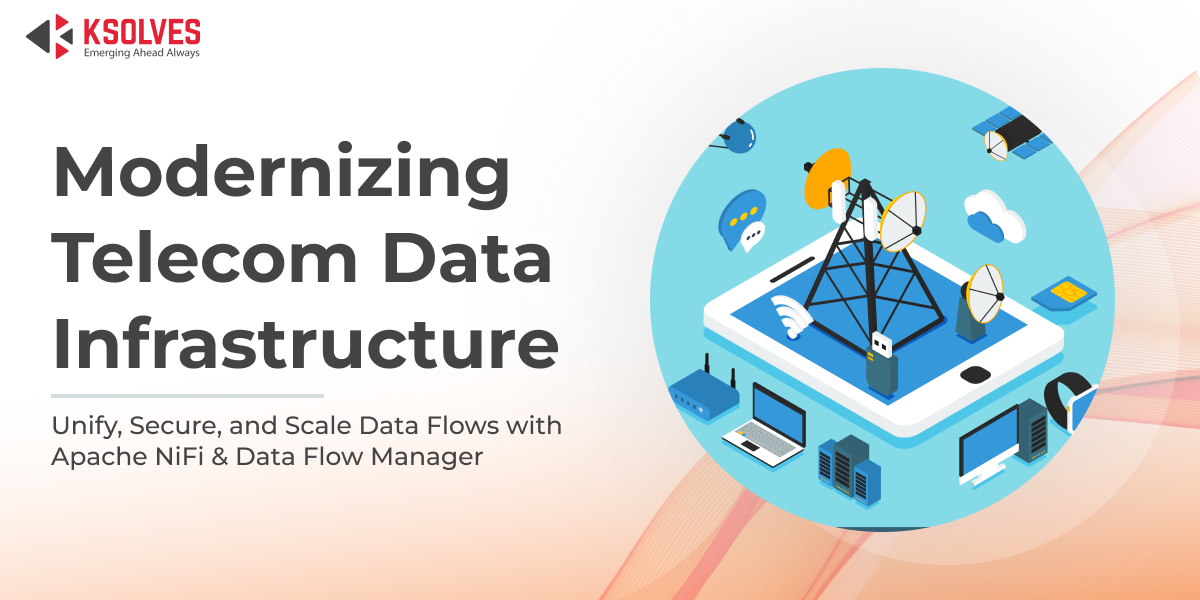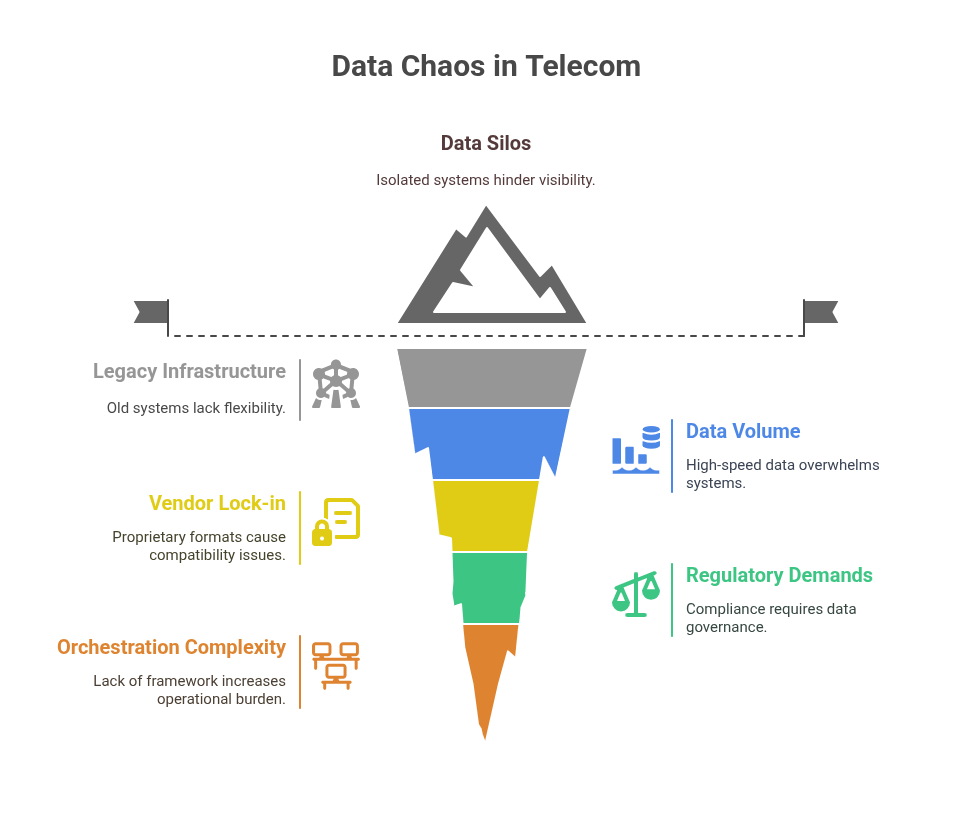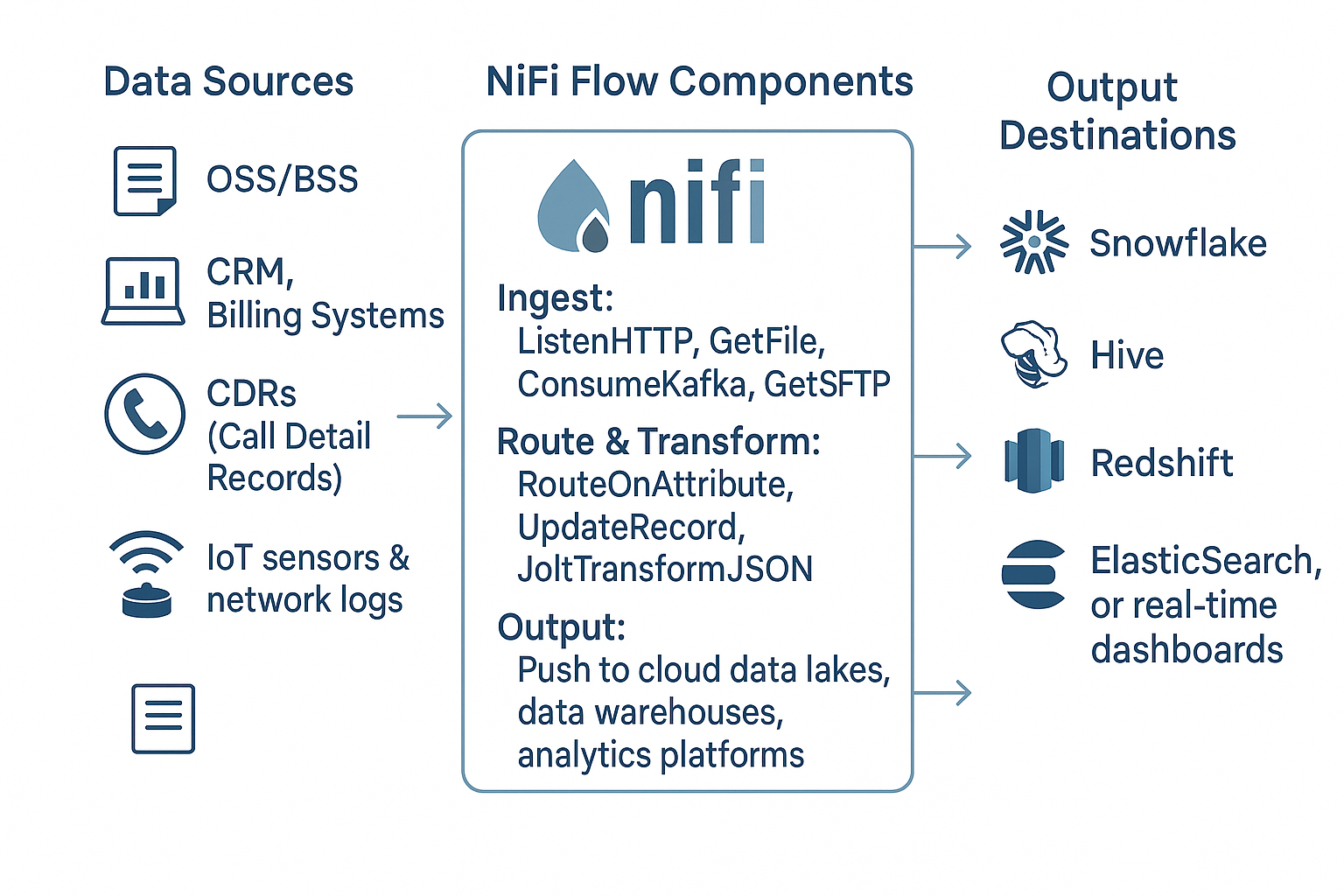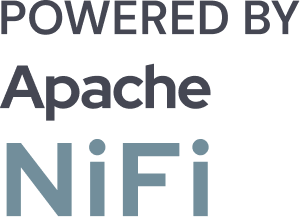Modernizing Telecom Infrastructure with a Unified Data Layer Using Apache NiFi
![]()

In a telecom enterprise, every millisecond matters and every byte counts. As networks evolve with 5G, IoT, and edge computing, one thing remains constant: the data is everywhere and scattered. From OSS/BSS systems and call records to network telemetry and customer interactions, data flows across hundreds of systems in silos.
Yet the true power of this data isn’t in its volume but in its unification.
This blog explores how telecom operators can modernize their infrastructure by building a unified data layer using Apache NiFi, enabling real-time insight, operational efficiency, and strategic agility.
What is a Unified Data Layer in Telecom?
A Unified Data Layer (UDL) in the telecom context is a logical architecture that consolidates, integrates, and standardizes data from a wide range of internal and external systems. It provides a centralized, consistent interface for all downstream consumers, including analytics platforms, business applications, and AI/ML models.
It acts as a foundation layer that decouples data producers from data consumers, enabling seamless and scalable data exchange across the enterprise.
Think of it as the nervous system of a telecom organization, continuously gathering and relaying signals from across:
- OSS/BSS platforms (e.g., provisioning, billing, subscriber management)
- CRM and customer service systems
- Network infrastructure and IoT sensors
- Call Detail Records (CDRs), usage data, and network logs
- External APIs, partner integrations, and third-party tools
By ingesting and normalizing this data into a unified layer, telecom operators can achieve:
- Consistent data access across teams.
- Faster insights with near real-time pipelines.
- Streamlined compliance and governance.
- Improved data quality through centralized validation and transformation.
- Simplified integration with analytics, AI/ML, and BI tools.
- Faster root-cause analysis and incident resolution across systems.
The Data Chaos in Telecom: Key Challenges
Telecom organizations operate in one of the most data-intensive and fragmented environments in the enterprise landscape. While the volume of data continues to grow exponentially, the complexity of managing it grows even faster.
Here are some of the core challenges that create chaos in telecom data environments:
- Legacy Infrastructure with Rigid Schemas
Decades-old systems, often mission-critical, are difficult to modernize and integrate, lacking the flexibility needed for real-time data exchange.
- Siloed and Incompatible Systems
OSS, BSS, CRM, and network tools often operate in isolation, creating data silos and blocking end-to-end visibility.
- High-Velocity, High-Volume Data Streams
Millions of data points per second flow in from IoT devices, mobile towers, usage events, and customer interactions, creating an unrelenting stream of unstructured and semi-structured data.
- Vendor-Specific Data Formats and Interfaces
Proprietary systems introduce inconsistencies and compatibility issues, making data standardization and portability a significant hurdle.
- Evolving and Stringent Regulatory Requirements
Regulations like GDPR, CPNI, and TRAI demand secure handling, traceability, and governance of sensitive data, often across jurisdictions.
- Lack of End-to-End Data Orchestration
Without a unified orchestration framework, integrating, transforming, and delivering data in a timely and secure manner becomes operationally complex and resource-intensive.

These challenges collectively delay decision-making, increase operational costs, and hamper innovation. Addressing them requires more than traditional ETL or data warehouse approaches. It demands a purpose-built, scalable, and intelligent data integration layer designed for the telecom domain.
Why Apache NiFi is Built for Telecom Data Unification
Apache NiFi is far more than a traditional ETL tool. It’s a purpose-built data logistics and flow orchestration platform engineered for complex, high-volume environments like telecom.
It addresses the core needs of telecom operators by enabling seamless, secure, and scalable data movement across a wide variety of systems and protocols.
Here’s why NiFi is uniquely suited for unifying telecom data:
- Visual Flow-Based Programming
Design, manage, and modify data pipelines using a drag-and-drop UI—ideal for rapid development and cross-functional collaboration, with zero code required.
- Protocol-Agnostic Ingestion
Easily connect to diverse data sources, including Kafka, MQTT, FTP/SFTP, REST APIs, JDBC, HDFS, and more, ensuring interoperability across legacy and modern systems.
- Guaranteed Delivery with Back Pressure Handling
Built-in mechanisms for flow control, load balancing, and retry logic ensure reliable delivery even under heavy loads or network interruptions.
- End-to-End Data Lineage and Provenance
Every data movement is tracked at the record level, offering complete auditability, essential for regulatory compliance in telecom environments.
- Unified Real-Time and Batch Processing
Handle streaming and batch data within the same architecture, reducing complexity and simplifying operations.
- Security by Design
Role-based access controls, SSL/TLS encryption, and multi-tenant support ensure secure handling of sensitive telecom data.
In high-stakes telecom operations, where data volume is massive, uptime is critical, and compliance is non-negotiable, Apache NiFi acts as the control tower for data, orchestrating everything from ingestion to delivery with precision and visibility.
Reference Architecture: Building the Unified Layer

Let’s break down a simplified architecture for a telecom operator using Apache NiFi:
Data Sources:
- OSS/BSS
- CRM, Billing Systems
- CDRs (Call Detail Records)
- IoT sensors & network logs
NiFi Flow Components:
- Ingest: ListenHTTP, GetFile, ConsumeKafka, GetSFTP
- Route & Transform: RouteOnAttribute, UpdateRecord, JoltTransformJSON
- Output: Push to cloud data lakes, data warehouses, analytics platforms
Output Destinations:
- Snowflake, Hive, Redshift, ElasticSearch, or real-time dashboards
This unified architecture enables end-to-end visibility and real-time responsiveness, transforming siloed data into usable intelligence.
Implementing the Strategy: A Phased Approach
Modernizing telecom infrastructure with Apache NiFi requires a strategic, phased rollout, ensuring scalability, governance, and operational resilience from day one.
Here’s how to approach it effectively, with Data Flow Manager playing a critical role in key areas of the implementation:
1. Audit & Discovery
Start by conducting a comprehensive audit of your existing data ecosystem:
- Inventory all data sources: OSS, BSS, CRM, network logs, IoT, and external APIs.
- Document data formats, access protocols, and compliance obligations (e.g., GDPR, CPNI).
- Identify data duplication, transformation needs, and latency bottlenecks.
This phase lays the foundation for designing flows aligned with both technical and regulatory requirements.
2. Design Modular, Reusable Flows
Design modular flows for:
- Ingestion (e.g., Kafka, SFTP, JDBC)
- Transformation (e.g., data enrichment, cleansing, routing)
- Delivery (e.g., cloud storage, analytics platforms, APIs)
Traditionally, designing modular NiFi flows involves the use of Apache NiFi’s visual UI. But you can simplify this with Data Flow Manager’s AI-powered flow creation. Describe your flow details in natural language, and the tool will generate it in JSON format. Further, you can either download it or add it to the NiFi Registry.
This approach eliminates the manual overhead of building flows from scratch, enforces design consistency, and empowers both technical and non-technical teams to contribute to data operations.
3. Secure the Flow End-to-End
Telecom data is highly sensitive, and securing it is non-negotiable. Apply:
- TLS/SSL encryption for data-in-motion.
- Role-based access controls for processors and flows.
- Policy management to restrict unauthorized access.
- NiFi parameter contexts for securing credentials and configurations.
Moreover, Data Flow Manager offers robust role-based access control (RBAC), allowing administrators to define granular user roles and permissions based on organizational responsibilities. This ensures that only authorized personnel can create, deploy, promote, or modify data flows, minimizing the risk of accidental changes or unauthorized access.
Additionally, RBAC extends to NiFi cluster-level access, enabling secure and controlled interaction with specific environments (e.g., Development, QA, Production). This guarantees zero unauthorized access to critical production flows and infrastructure, aligning with enterprise-grade security and compliance standards.
Also Read: Securing Apache NiFi Data Flows: Data Flow Manager’s Role in Enhancing Governance and Compliance
4. Enable Version Control and Flow Promotion
In a telecom environment where data flows power critical operations, version control and seamless promotion of flows across environments (Dev, QA, and Prod) are essential.
Traditionally, this requires navigating between the NiFi UI and NiFi Registry to manage versions, compare changes, and manually promote flows. However, Data Flow Manager streamlines and automates this entire process.

By integrating tightly with NiFi Registry, Data Flow Manager provides:
- Comprehensive version tracking for every change made to a flow
- Easy rollback and version comparison to restore previous states or audit modifications.
- Code-free flow deployment and promotion, eliminating the need for scripting or manual exports.
- Built-in validation to ensure compatibility and consistency before pushing flows to higher environments.
- All actions from a single unified interface, with no need to switch between NiFi and Registry UIs.
This centralized approach ensures that every deployment is traceable, consistent, and compliant with enterprise change management protocols, while significantly reducing operational overhead and human error.
5. Monitor, Optimize, and Scale
Once deployed, your flows must remain performant and observable:
- Deploy NiFi in cluster mode to enable horizontal scaling across nodes.
- Use Prometheus and Grafana for real-time monitoring of flow health, queue sizes, throughput, and failure rates.
- Fine-tune back-pressure settings and queue thresholds based on live traffic patterns.
Read more – How Data Flow Manager Streamlines End-to-End Cluster Management in Apache NiFi
Use Cases in Action
1. Customer 360° View
Break down data silos by unifying customer data across billing systems, usage logs, CRM, and support platforms. With a centralized, real-time view of each subscriber, telecom providers can drive:
- Hyper-personalized offers
- Proactive service recommendations
- Targeted retention campaigns
This holistic visibility lays the foundation for superior customer experience and lifetime value growth.
2. Network Monitoring & Fault Detection
Continuously ingest logs and telemetry from network elements, base stations, and IoT sensors. Route this data through anomaly detection models to:
- Identify faults in real-time
- Trigger automated alerts or remediation workflows
- Minimize service disruptions and downtime
By enabling predictive monitoring, telecom teams can transition from reactive to proactive network management.
3. Real-Time Fraud Detection
Streamline the flow of call detail records (CDRs), SIM activity, and payment transactions to machine learning or rule-based fraud detection engines. Detect and block:
- SIM cloning
- Unauthorized access
- Suspicious call patterns or high-risk geographies
All within seconds—mitigating financial losses and protecting customer trust.
4. Regulatory Compliance & Reporting
Generate structured, timestamped, and lineage-tracked data pipelines to fulfill regulatory mandates such as GDPR, TRAI, CPNI, and others. With built-in data provenance and audit trails:
- Meet compliance with confidence
- Accelerate audit readiness
- Ensure secure, policy-driven data handling across the board
Read More– Top 7 Benefits of Data Flow Manager for Businesses
Conclusion
In a telecom landscape driven by speed, scale, and complexity, building a unified data layer is essential. Apache NiFi, combined with Data Flow Manager, offers a powerful foundation to orchestrate, secure, and scale data flows across the enterprise. Together, they enable telecom operators to break down silos, respond in real-time, and modernize operations with confidence.
By streamlining everything from ingestion to governance, this unified approach empowers teams to move faster, make smarter decisions, and stay compliant in a rapidly evolving industry. The result? A future-ready data infrastructure built for resilience, agility, and growth.
![]()

